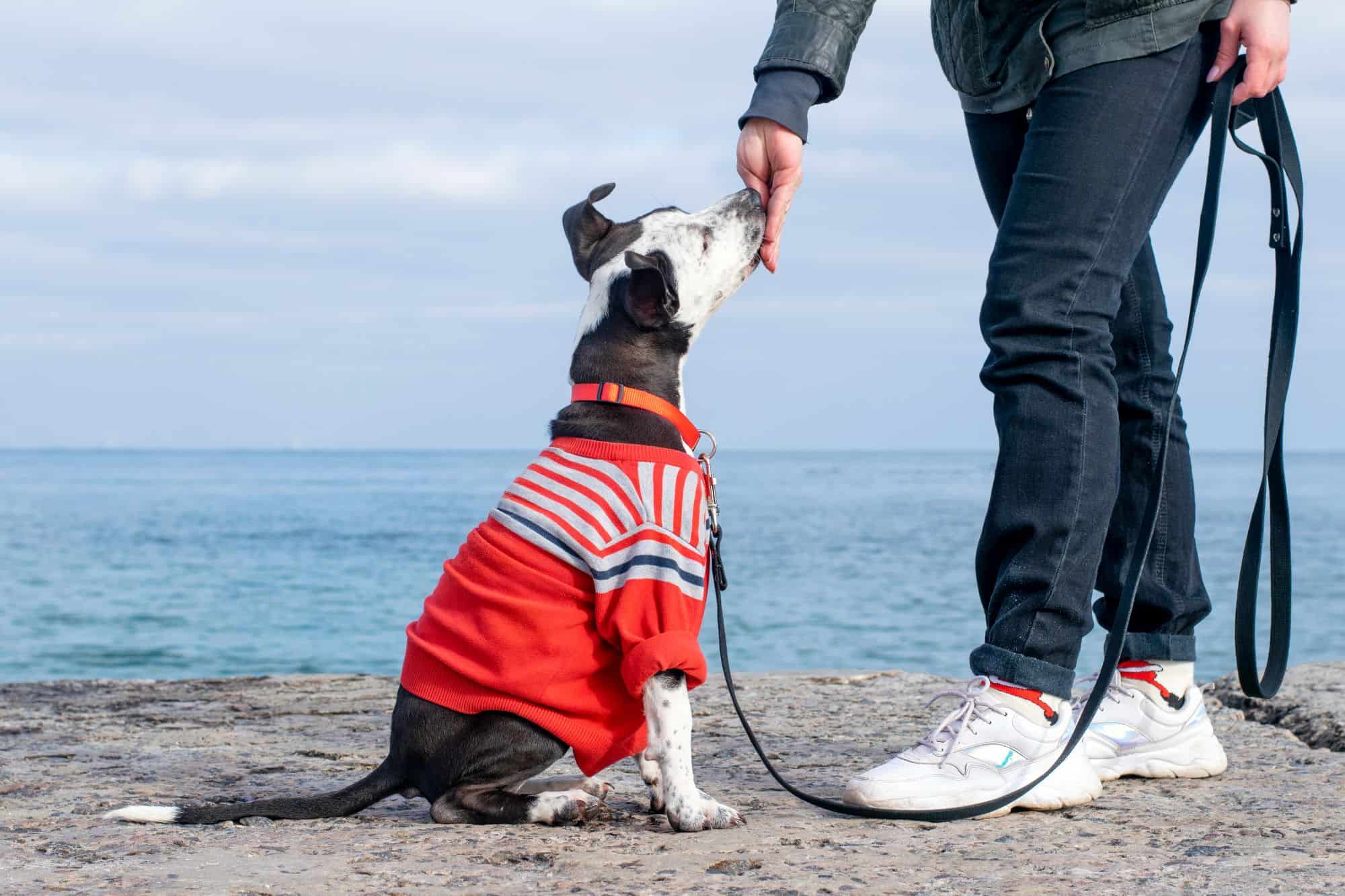The “Leave It” Command in Six Steps

Imagine going about your day, and suddenly a five-dollar bill fell from the sky. You go towards it, but before you get there, someone says, “leave it!” only for you to turn around and see they have ten five-dollar bills. This is the basic training concept behind teaching your dog how to “leave it.”
Your team at Mobile Vet M.D. knows that lots of dogs would be tempted to go for that first reward even on their way to collect the bigger one. But, we also know that teaching your dog to leave it could potentially save their life!
Why to Teach “Leave It”
Certain dogs are more curious than others, and they can get into all sorts of things that range from inconvenient to dangerous—like grabbing a child’s stuffed animal versus a dog toy, where you can’t explain that it’s not for them. Similar to how all the delicious-smelling food at the dinner table isn’t for them, which can be hard to explain.
You can teach this by taking your dog’s portion of food they would usually be given at mealtime and using it as training treats. This is easiest if they are on kibble. If they can afford the extra calories when training, have a variety of different treats on hand, or better yet, have special treats that your dog only gets on rare occasions.
How to Teach “Leave It”
- Put a single treat in your left hand and multiple treats in your right hand.
- Hide your right hand behind your back.
- Allow your dog to sniff the treat in your closed left hand and let them try to get it out.
- When your dog stops showing interest in your left hand, reward them from your right hand.
- Eventually, increase the difficulty by opening your left palm to show the treat.
- Reward your dog for ignoring the treat by giving a “jackpot” of five treats and praise.
Even though “leave it” is the go-to term of choice, don’t feel like that has to be the one you use. Picking an “I mean business” phrase is what we’re talking about here. For example, “drop it” is not a great choice because you’re likely to say drop it with a bunch of things even if your dog has only grabbed onto them in a non-life-threatening situation. The most important thing is for you to find a phrase that you will only use in a case where you want your dog to leave something alone, and it’s important to avoid picking a term that you will overuse when you don’t have treats to back it up.
Practice in Various Settings
Keeping this command for “emergencies only” is essential, but it’s also important to keep brushing up on it in situations where you know it would be very hard for your dog to lose. For example, ask them to leave something that they don’t really care about and then heavily reward them when they do.
Make sure to practice in new and unfamiliar situations or with different treats and leave it objects. Always remember that once a behavior is “learned,” that doesn’t mean it’s forever in your dog’s memory bank.
Your friends at Mobile Vet M.D. are here to help with any questions or concerns you may have. So give us a call at (732) 387‑7977 to schedule an appointment today!
Please note: Before any visit, it is always a good idea to confine your pet to a small area such as a bathroom so we can be sure to promptly provide care, as lots of pets can go running for cover as soon as they hear someone at the door!
